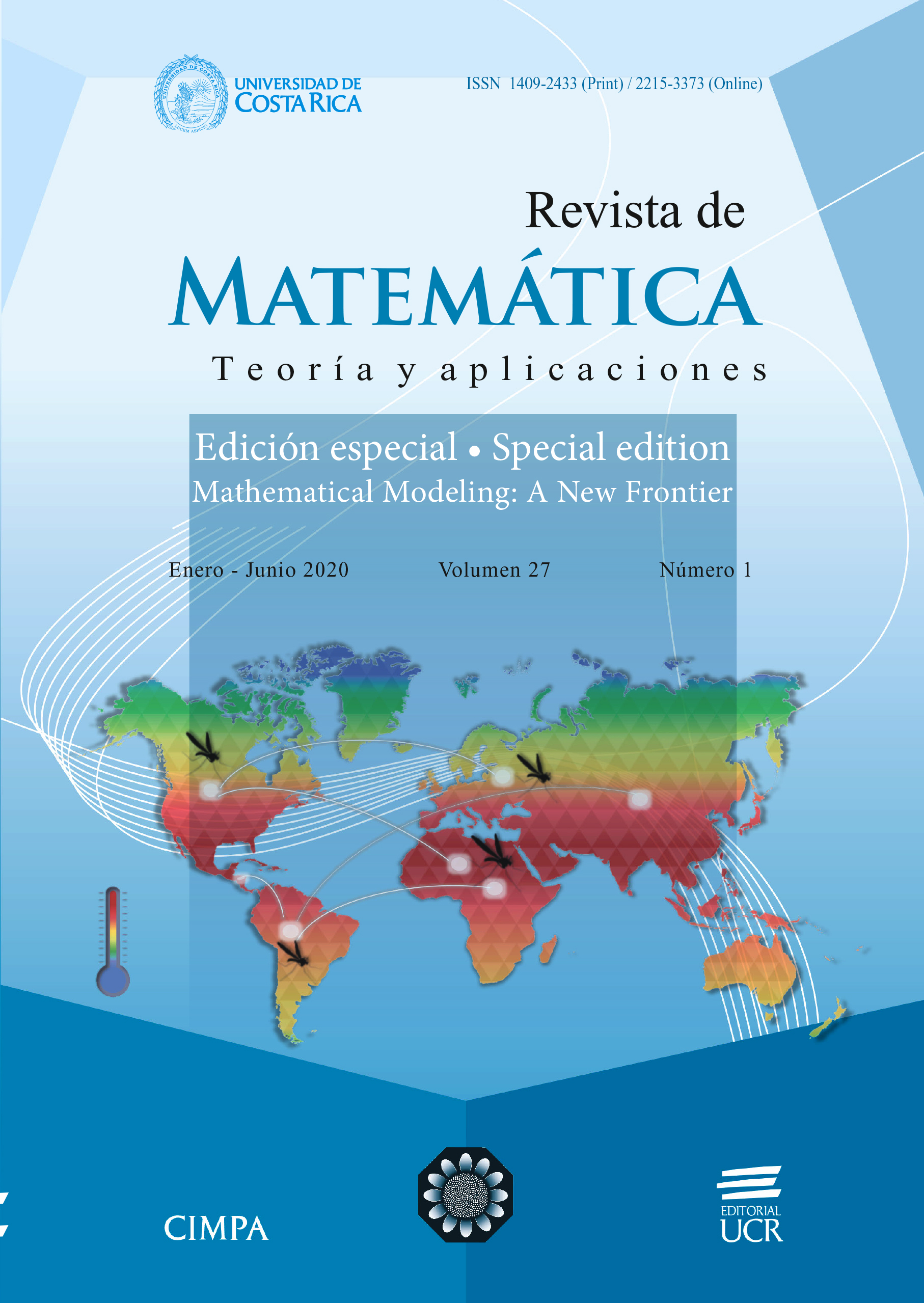Abstract
Spraying insecticides to control triatomine populations, the vectors of Chagas disease, does not prevent the disease’s reemergence in infested areas. Mathematical models try to explain this reemergence in terms of the factors underlying sylvatic transmission of the parasite Trypanosoma cruzi. The presence of reservoir hosts such as woodrats is essential to the infection’s geographical spread. This study models a vector-host system using integrodifference equations to incorporate dispersal as well as hostvector interactions. These equations capture, simultaneously, the three processes taking place between successive generations: demography, infection and spatial dispersal. Travelling waves, the solutions of the integrodifference equations thus derived, allow one to calculate numerically the invasion speed of the disease. Neubert-Caswell’s theorem can then be applied to calculate the analytical invasion speed.
References
B.A. Crawford, C.M. Kribs-Zaleta, G. Ambartsoumian, Invasion speed in cellular automaton models for T. cruzi vector migration, Bulletin of Mathematical Biology 75(2013), no. 7, 1051–1081. doi: 10.1007/s11538-013-9840-7
C. Kribs-Zaleta, Estimating contact process saturation in sylvatic transmission of Trypanosoma cruzi in the United States, PLoS Negl Trop Dis4(2010), no. 4, e656, 1–14. doi: 10.1371/journal.pntd.0000656
F.X. Lescure, G. Le Loup, H. Freilij, M. Develoux, L. Paris, G. Pialoux, Chagas disease: changes in knowledge and management, Lancet Infect Dis 10(2010), no. 8, 556–570. doi: 10.1016/S1473-3099(10)70098-0
Médecins Sans Frontières. The fight against Chagas disease: time to focus on patients. 09 July 2009. https://www.msf.org/fight-against-chagas-time-focus-patients, accessed Mar/03/2012.
F. Menu, M. Ginoux, E. Rajon, C.R. Lazzari, J.E. Rabinovich, Adaptive developmental delay in Chagas disease vectors: an evolutionary ecology approach, PLoS Negl Trop Dis 4(2010), no. 5, e691, 1–10. doi: 10.1371/ journal.pntd.0000691
M.G. Neubert, H. Caswell, Demography and dispersal: calculation and sensitivity analysis of invasion speed for structured populations, Ecology 81(2000), no. 6, 1613–1628. doi: 10.2307/177311
World Health Organisation. Chagas disease (American trypanosomiasis). Fact sheet 340, June 2010. https://www.who.int/chagas/disease/en/, accessed Mar/03/2012.





